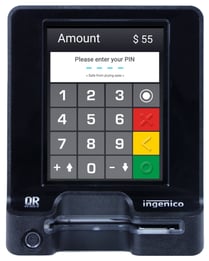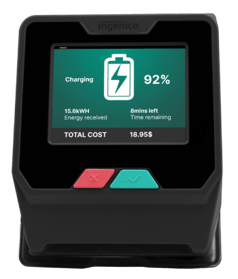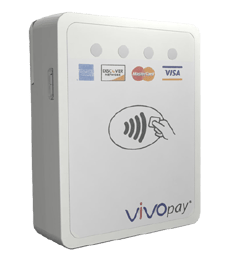Unattended Payments: How ISVs Can Choose the Best Devices
Posted on By Jacqueline Favara

As an ISV, you live and breathe your own tech.
But payments technology is an evolving ecosystem of complex solutions. What might be the best solution today may be a bad fit (or worse, an impediment) tomorrow – especially if you don’t have access to expertise on this constantly evolving technology.
For many ISVs, it can feel a bit like the wild west.
For example, many ISVs may have been caught off-guard by the recent supply chain issues that are disrupting the availability of many types of payment devices. This unexpected development is forcing both ISVs and their merchants to adapt to new technology – but often without the wherewithal, industry knowledge, or preparation to do so in an effective way.
With all this upheaval, you may not know whether you’re better off choosing a single device to integrate or whether you should work with a gateway partner. Let’s explore that further.
Self-Service Payment Devices: Direct or Gateway?
When it comes to managing devices, ISVs have two choices for certification: direct and gateway. Both approaches have their advantages.
Direct Certification
Direct certification involves integrating a single device into a platform and then certifying it separately. It’s very much a one-for-one arrangement.
The biggest benefit of direct certification is the cost savings, because no fees need to be paid to a third party.
However, there are also drawbacks to this approach. For starters, direct certification can limit the number of solutions you can offer to your merchants – and certifying multiple devices separately can be costly, both due to the per-device fee and the resource allocation to create a solution that combines data across devices.
So, while direct certification may be less expensive, it also offers you the least flexibility and limits omnichannel functionality.
A gateway, on the other hand, opens up a world of possibility.
Gateway Certification
With a gateway, certification happens at the solution instead of the device, which allows for incredible flexibility.
Gateways Facilitate Omnichannel Solutions
With a gateway, multiple devices, multiple families of devices, multiple processors, and every ISV that integrates with the gateway solution provider is automatically certified. ISVs can integrate with any variety and number of devices in almost a “plug-and-play” manner, creating the opportunity for growth and expansion.
That means you can have two completely separate types of devices operating at different locations and in different self-service payment environments, using the same solution. Gateways even allow you to operate unattended and in-store payment devices on the same account, making it a completely agnostic solution.
Gateways Use a Single Integration for All Transaction Types
Another huge advantage of using a gateway is that it allows for a multitude of transaction types and timelines.
Let’s say you have a merchant with laundromats where customers pay for wash and dry cycles with refillable loyalty cards. The merchant will need prominently displayed unattended devices where customers can load credits to their prepaid loyalty cards. But the merchant can use a different device for the washers and dryers – and even devices that can be built into the machines, so the customer only sees where they need to swipe or tap.
The best part? Because all these machines are on one gateway with a single integration, it’s much easier to aggregate reporting for utilization, sales and revenue. In fact, reporting for all laundromat locations and any other unattended (or in-store) payment devices can be combined in one place.
Keep in mind, not all gateways are the same.
Be Wary of White Label and Hardware-Specific Gateways
The market is full of gateway solution providers. Many are white-labeled, where a company with little-to-no industry experience puts their name and logo on a gateway developed and licensed by another company.
ISVs are pretty much on their own with these gateways in terms of customer support, and they offer much fewer options for customization. A change to the platform for a single implementation would have to be done on a global scale – which is highly unlikely to happen.
Similarly, there are gateway providers that only work with one family of devices. This limits flexibility, hardware options and payment methods. And having fewer payment method options can often result in paying higher processing fees.
Ingenico and IDTECH: What an Expert Gateway Partner Knows
In addition to the integration and flexibility, there is another major advantage to working with a gateway partner: expertise. A payment gateway partner worth your time will be one who makes a point of staying on top of this ever-evolving industry.
Case in point: Two top self-service devices that we support at Payroc have very different use case scenarios. Without knowing this information, an ISV could select a device that, while excellent, is just not the right fit for that use case. To illustrate, let’s examine these differences:
Ingenico Self Series Payment Devices
The Ingenico Self Series has the latest technology, including pin on glass or pin on screen functionality. It’s slightly more expensive than other devices but the value you get from this family of devices definitely pays off. In particular, we recommend the Self/5000, widely considered the Rolex of payment devices, in addition to the Self/3000. These devices are impressive looking, high-quality and perfect for outdoor settings.

Use Cases
Where the Self/5000 shines is in ruggedized, outdoor environments that require unattended or SMART retail solutions such as a car wash, an indoor parking machine, indoor vending or even outdoor lockers. Because the device is waterproof, dustproof and tamper proof, it can stand up to all kinds of wear and tear.
The Self/5000 is also a solid choice for self-service environments where the device is on display. It’s sleek design and intuitive controls make it a perfect choice for prepaid card areas in laundromats, arcades and other high-volume, unattended locations where customer service is important.
 The Self/3000 is designed for vending, car wash, EV charging, kiosks, and more. This device accepts all payment methods, including contactless, magstripe, and EMV payments. The Self/3000 enables easy implementation on the rear or front side of machinery, it also features identical mounting attributes as its predecessor, the iUC285, making the upgrade transition seamless.
The Self/3000 is designed for vending, car wash, EV charging, kiosks, and more. This device accepts all payment methods, including contactless, magstripe, and EMV payments. The Self/3000 enables easy implementation on the rear or front side of machinery, it also features identical mounting attributes as its predecessor, the iUC285, making the upgrade transition seamless.
ID TECH Common Kernel Products
When it comes to customization, you can’t go wrong with the ID TECH family of devices.
These payment devices are perfect for environments where customization is a priority, which provides a lot of flexibility. Notably, these devices are often used in built-in installations, so there’s less attention to how the devices look and more on how well they perform.
Our go-to device in this family is the ID TECH 3300, which is perfect for arcade machines and kiosks. Affordability is another advantage.

Use Cases
The ID TECH 3300 can easily be customized and integrated into machines to allow a host of payment options. Users can swipe and dip, and the devices also allow for retina or fingerprint scans. These devices are an excellent option for blending into the machine and offering seamless, intuitive, reliable payments.
Choose a Payments Partner That Offers the Most Flexibility
Whether it’s knowing the perfect device (or devices) for your specific use cases or simply helping you steer clear of a jam, you can rely on a good payments partner with true omnichannel capabilities to be your payment device expert, ensuring you’re able to build solutions for any scenario.
With over 150,000 merchants, Payroc is the leading self-service payments platform. If you seek help choosing the right payment devices for your unattended payments solution, contact us today.
